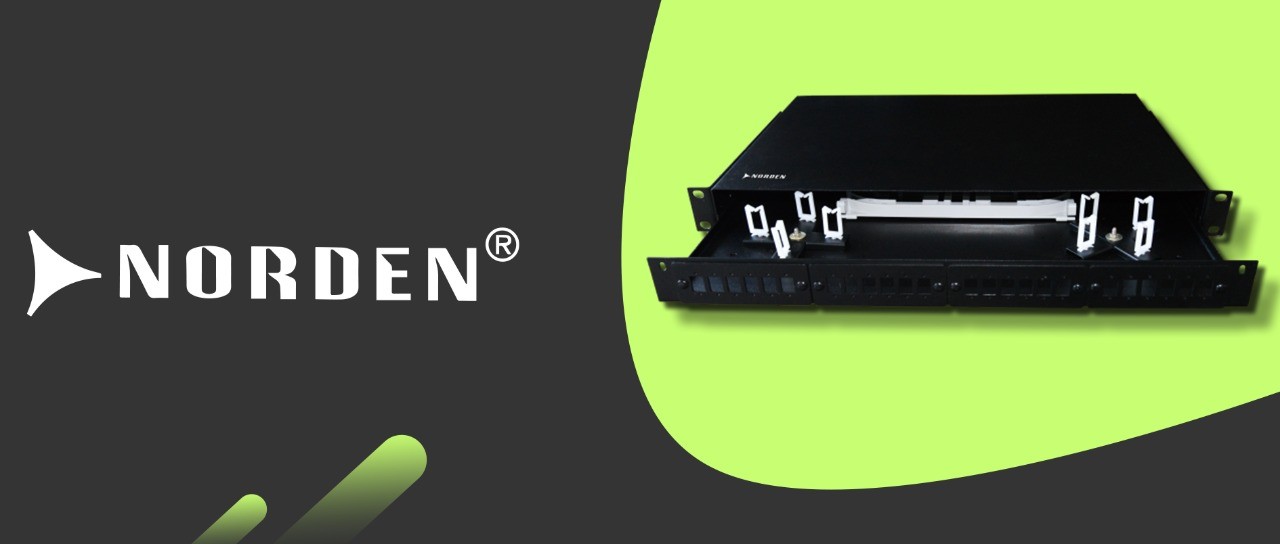
Digitalisation has transformed the way entities function. The lifelines of digital networking, the most suited cables and patch panels have to be chosen. With diverse configurations, multiple options, and varying technical formations available, it is an intricate task to choose the right panel.
Elaborate details and insight into the design specialities of fibre optic panels would help you reach an informed decision thereby, preventing the possibility of a mistake while purchasing it for your organization. Trusted firms like Norden Communication always brief the clients about the exclusivity to help them understand the fibre optic patch panels better.
A patch panel is a simple but vital component in a networking system. The device consists of jacks that facilitate connections, interconnections, testing circuit installation, and routing. Patch panels provide flexible and convenient connections of circuits and routing cables.
Patch panels are essential accessories for organized cabling, offering a wide range of connectivity solutions to the network hardware. Local Area Network (LAN) will be incomplete without patch panels.
Ethernet patch panels and Fibre Optic patch panels are the two types of patch panels used in networking solutions. Ethernet applications necessitate Ethernet patch cables.
Fibre optic patch panel is, nowadays, the most commonly used advanced type of patch panel. A fibre optic patch panel is an interface that connects optical fibre cable and optical equipment. These can be mounted to 19” to 23” rack systems, as well as wall-mounted fibre optic patch ones.
Previously, fibre optic cables had several issues that affected their performance. Bending and breaking of the cables were common and people rejected using fibre optic cables. Further, it required cleaning for optimal performance. Moreover, the complex installation process, cost and difficulties in maintenance impacted the acceptability. Hence, fibre optic systems faced severe setbacks in the market.
The design features and technology have changed consequent of R & D by leading firms. Presently, fibre optic systems have proven durability, cost-effective installation, innovative HBAs, and enhanced functionality and performance gaining widespread acceptance and exemplary popularity.
You can refer to - Types and tips to Choose the Right Structured Cabling Infrastructure
Procure fibre patch panels only from reliable manufacturers. Meticulous design, a well-organized manufacturing process, and detailed quality assurance analysis by the production firm guarantee the life and error-free performance of the fibre optic patch panels.
The selection process for fibre patch panels would predominantly involve choosing the one that suits your requirements. Ideally, the fibre optic panels are selected based on the panel location, panel compatibility, panel capacity, panel design, and panel density.
Where do you want to install the patch panel? Whether it would be placed indoors or outdoors? What would be the level of protection from natural elements including rain and dust? Check all these factors as the initial step. A patch panel to be placed outdoors requires a sturdy design that can withstand climatic conditions.
Polarity, performance, and connector type have to be confirmed prior to selecting the patch panel. Compatibility is undoubtedly a vital aspect in the selection of fibre patch panels. Connectivity and performance would depend on the panel compatibility with the embedded components. The technology integrated must be scalable to cater for the probable modifications in the future.
The volume, load, and connections intended area to be examined. You must check the fibre patch panel to meet the networking requirements you have. Overloading the patch panel can adversely affect the performance. You can choose from loaded and unloaded (modular) fibre patch panels. The loaded patch panels come with preloaded ports, adapter panels etc. On the other hand, the unloaded/ modular patch panels are flexible and you can expand the connectivity ports and capacity.
Choose the panel design as per the determined needs and features. Different types of patch panels based on design are:
These are the various fibre optic patch panel designs. Each type has pros and cons. It is best if you can get down to discuss the peculiarities with the firm. And identify the right type of patch panel for your network.
Fibre optic patch panels are normally installed in the server rooms, especially inside rack cabinets. The density or the number of ports per RU (rack unit) is another element to be considered for selecting the fibre patch panel. A standard rack cabinet is 42U high.
Picking the right fibre patch panel for your networking solution might turn into an arduous task. Expert guidance might be the only solution to get the most ideal patch panel for your system.
As you have understood the basic selection criteria, you can be involved in discussions with the technical specialists from the firm offering you patch panels.
What are the Benefits of Fibre Patch Panels?
Benefits of fibre patch panels include:
You can consult Norden Communication for any kind of advice, guidance or suggestions regarding fibre optic patch panels. With extensive expertise in the field, we would be able to clarify all your doubts and guide you correctly.